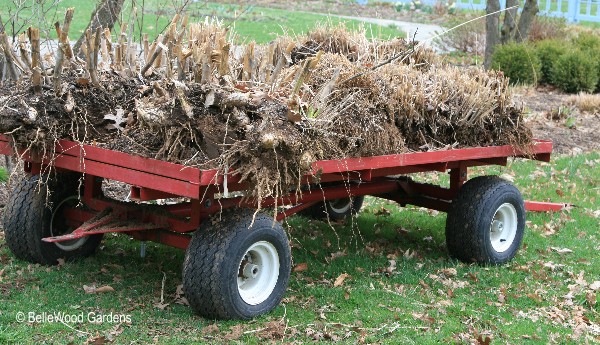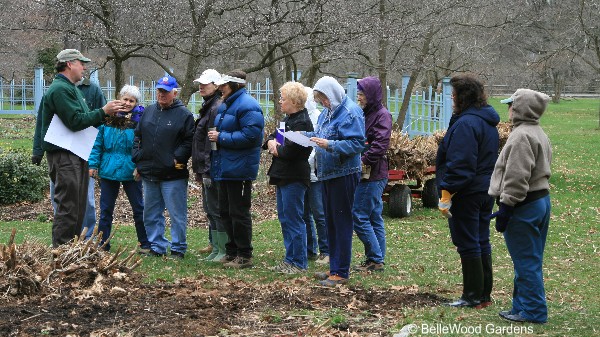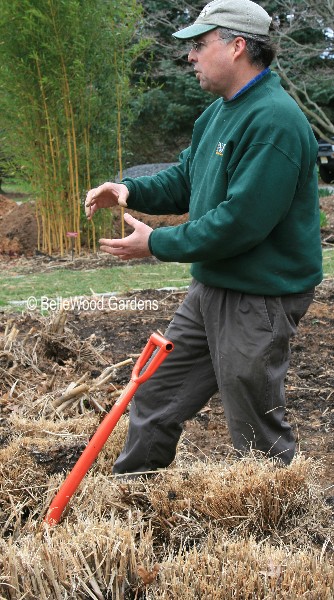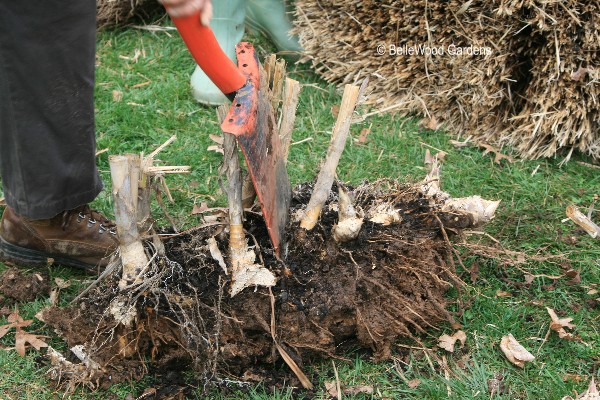
Saturday, 4 April 2009
Ornamental Grass Work Day at Rutgers Gardens
I teach several classes on a diversity of gardening topics at Rutgers Gardens in New Brunswick, New Jersey. The classes are held on Saturdays, from 10:00 a.m. until noon. Last night I loaded up my car with what I would need for The Edible Ornamental Garden. This morning I drove off in time to arrive by 9:30 a.m. as I like to arrive with time in hand to set up in a leisurely manner. Only, and how embarrassing, today my class is scheduled to begin at 1:00 p.m. Oopsie! However better too early than late.
Actually, had I planned my day, I could not have timed things better. Bruce Crawford, director of Rutgers Gardens, is teaching the second part of a two-day-long class on ornamental grasses. Since I had a morning at leisure I was able to join the group. The original border, attractive though it was, had grasses and other plants that were lacking the "back story" necessary for a botanical garden: not just each plant's name but also including such information as when was each plant accessioned, and what was the source.
So all the existing ornamental grasses were cut back (now is the time for that to be done anyhow) and dug out - with a backhoe. Some ornamental grasses are quite large. Any grass that was not "accessioned" by the students would be composted.

Here's a cart heaped up with chunks of grasses, too big to pick up.
Arundo donax, giant reed grass. Miscanthus sinensis, maiden grass.
There's another loaded cart, a line of grass clumps along the border.

Bruce, planting plan tucked under one arm, is discussing today's plan of action with the students.

Necessary hand-waving as Bruce explains the details.

Now the students get to work, getting down and dirty.

Miscanthus sinensis, maybe 'Cabaraet', perhaps 'Cosmopolitan'.
Easy enough to distinguish once the new growth develops.
What's important right now is getting that massive clump
divided down into manageable pieces. It is do-able, barely.

The impressive one is Arundo donax, with shoots so large they remind me of the bamboo shoots
I buy in Chinese markets. Massive canes will grow 18 feet or more in one growing season,
30 feet in milder climates. So massive a grass has a gentler use, providing the reeds
for oboe, clarinet, and bassoon. Potential source of biomass for cellulosic ethanol too.
The work was hard enough to keep everyone warm on a chilly, damp, gray morning. Lots of gardens are going to be embellished with ornamental grasses, and the compost heap is going to be well amended too. Break for lunch, then back to work planting the new border. I had my afternoon class to teach. And tomorrow? Well tomorrow, weather permitting, I have some ornamental grasses to plant too.
Back to April 2009